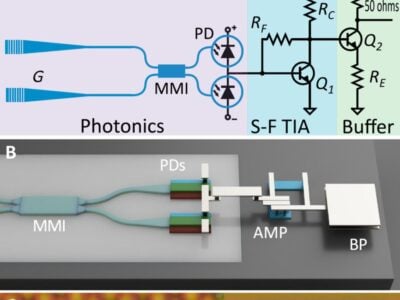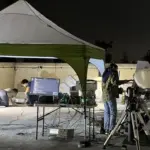
Building 2D semiconductors with nanopulse lasers for low cost sensors
The University of Galway in Ireland is working with the Tyndall National Institute at University College Cork to build 2D semiconductors for low cost sensors
The €1.2m project on ‘Pulsed Laser Annealing of 2D Semiconductors for Nanoelectronics’ aims to substantially increase the scalability, functionality, performance, and energy efficiency of electronic devices while keeping full compatibility with existing mass production technologies.
The project, co-led by Principal Researchers Dr Ray Duffy, Tyndall National Institute, and Professor Ger O’Connor, University of Galway, will carry out basic and applied research into new functional materials applicable to active components in sensors, nano- and opto-electronics
- Tyndall joins Silicon Catalyst to scale semiconductor start-ups
- Tyndall’s MagIC to have lasting environmental impact
- Irish entrepreneurs back Tyndall tech incubator
Applications will potentially include electronically activated sensors in low-cost smart medical devices, and better performing and longer lasting tech such as smartphones for consumers. This project will work on developing the early stages of the technology to meet these needs.
‘This project consortium is built on the foundation of shared expertise and enthusiastic collaboration of international experts in their complementary scientific fields,” said Dr Ray Duffy, Principal Researcher and project co-lead. ”The SFI Frontiers for the Future programme has enabled us to assemble a multidisciplinary team which will tackle many grand challenges of this semiconductor material system, with impact in real-world nanoelectronic applications. I am delighted and honoured to be part of this team.’
Professor Ger O’Connor at the University of Galway said: ‘We are truly excited by the opportunity to investigate how extremely short pulses of light, lasting a millionth billionth of second, can precisely re-position atoms in two dimensional materials, of just a few monolayers in thickness, to enable new technologies for the benefit of human-kind.’
Senior Head of Group, EU Programmes, at Tyndall National Institute, Georgios Fagas, said: ‘This is a fantastic opportunity to elaborate on our research programme on 2D materials and their application into future electronic devices. We are very excited to work together with University of Galway on a most challenging issue, which is the quality of the material when grown with large-scale deposition methods. The project brings together first-class expertise to unlock the application potential of 2D semiconductors.’
 If you enjoyed this article, you will like the following ones: don't miss them by subscribing to :
eeNews on Google News
If you enjoyed this article, you will like the following ones: don't miss them by subscribing to :
eeNews on Google News





